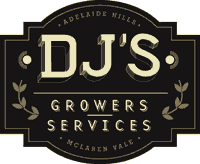Hi,
I am curious about looking at grapevine buds under the microscope. Could you also please let me know how many buds you can dissect in an hour, as I have a uni project to do on yield analysis and the number would be of assistance.
Many thanks, Andrew
Dear Andrew,
Almost anyone can learn to dissect buds, but not everyone has the patience to sit down and complete many samples. We use a compound microscope with to eye lenses that give a stereoscopic view of the inside of the bud. This allows us to assess the internal bud structure and look at the inflorescence primordia which are the structures that develop into grapevine flowers.
 |
| Bud Dissection. |
We would average two to three buds a minute, therefore it takes us between one and one and half hours to complete a vineyard (30x; 5x bud canes). We would generally limit ourselves to three vineyards per day to keep our eyes fresh.
The time it takes to dissect buds under a microscope varies from variety to variety. Sauvignon Blanc has small buds and small inflorescences which make it the slowest variety to assess. Grenache has large buds and large inflorescences which are the quickest to assess.
Low bud fruitfulness and high primary bud necrosis is linked to vigourous vineyards.
 |
| Internal bud structure. |
We perform dissections to look for low fruitfulness and assess the level of primary bud necrosis.
If we find problems with fruitfulness eg. levels below 1 bunch per bud (inflorescence primordia per bud), or high levels of bud death from primary bud necrosis, we advise growers to change their pruning in the short term and look at their management in the long term.
It is when you find blocks like these bud dissections come into their own as a vineyard tool.
DJ's agronomist Matthew Wilson says,
"Vineyards with high levels of lateral shoot growth can show low levels of fruitfulness. Primary bud necrosis is often common in vigorous vines and this is contributing to low fruitfulness. If you can catch this before pruning you can take action to prevent correspondingly low yields at harvest."


